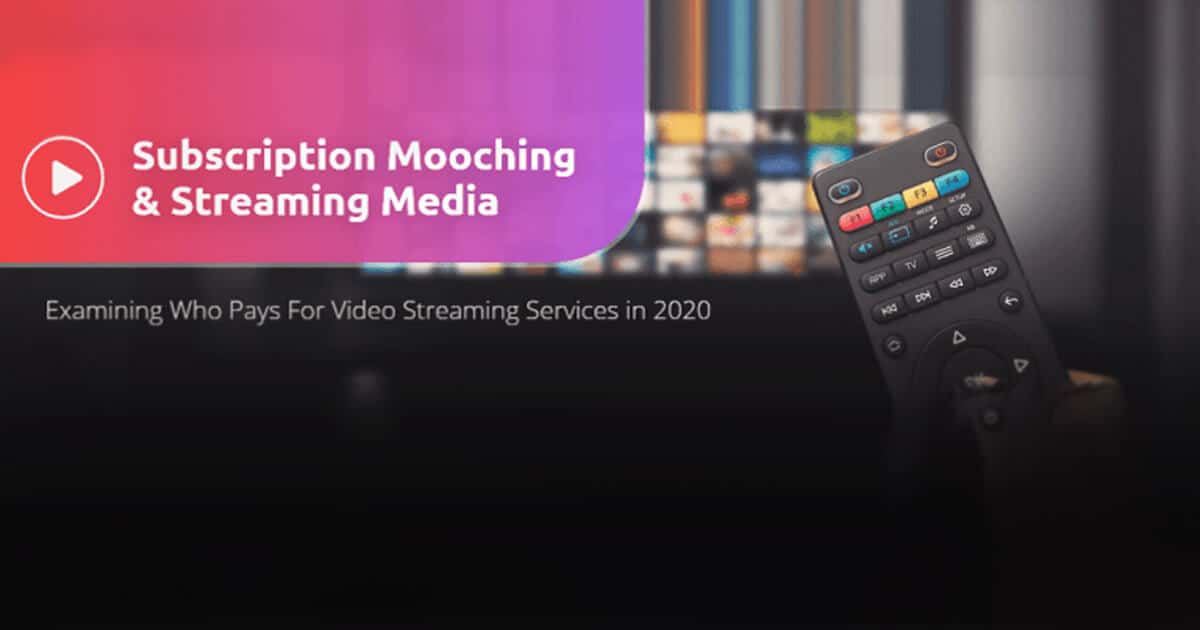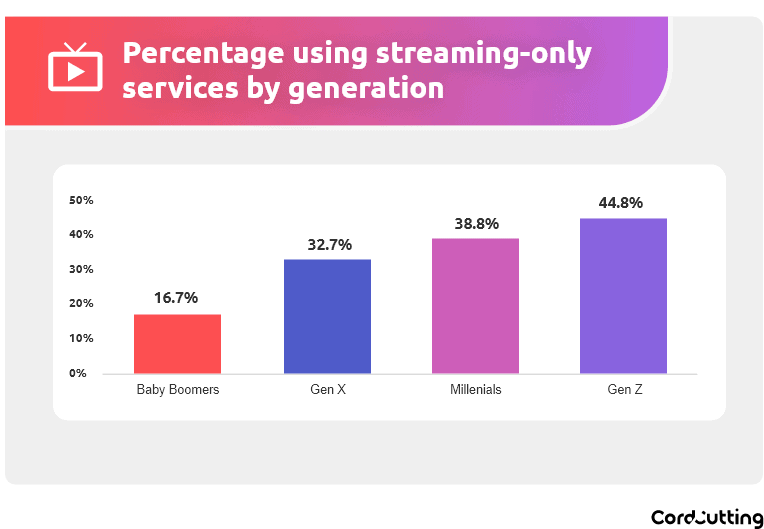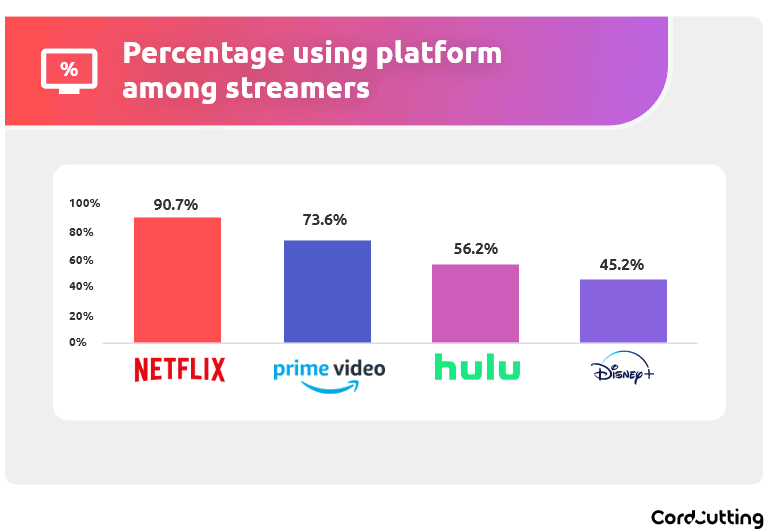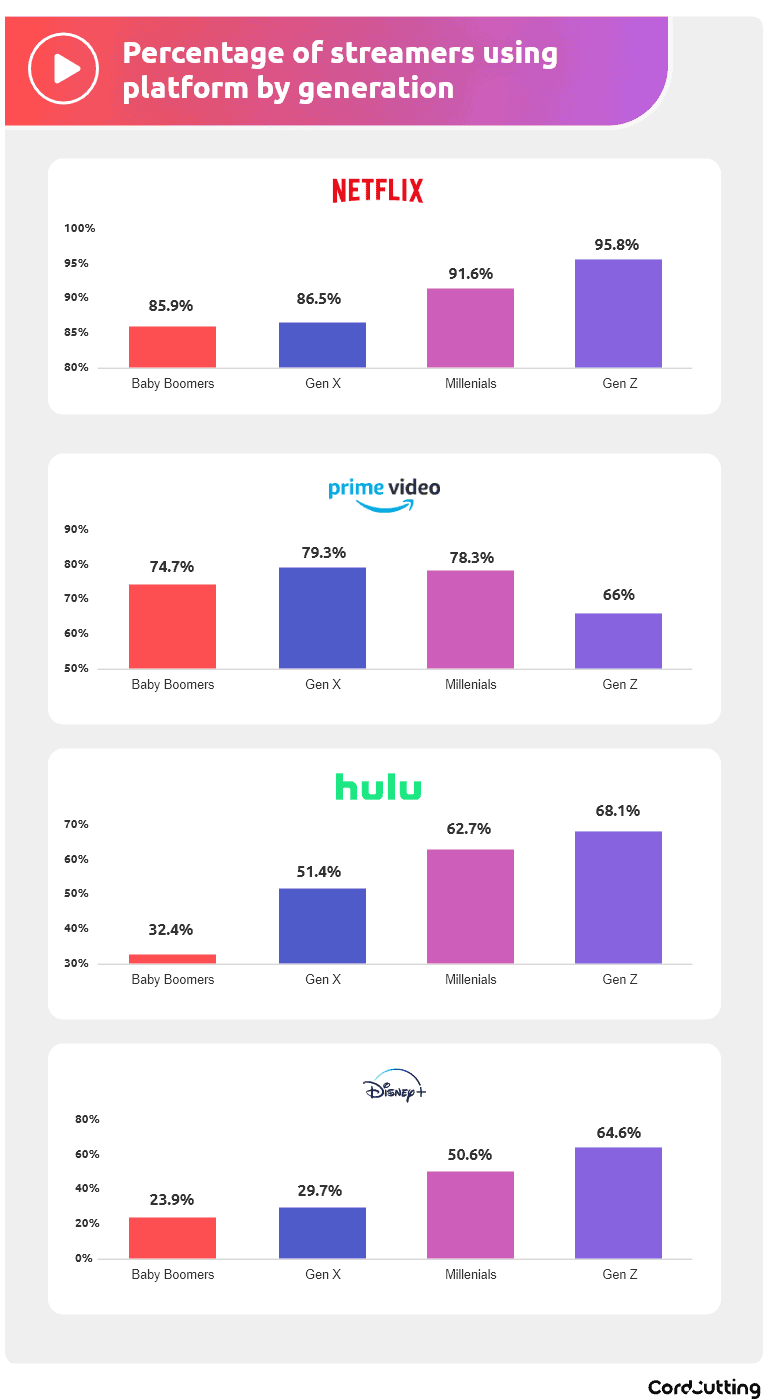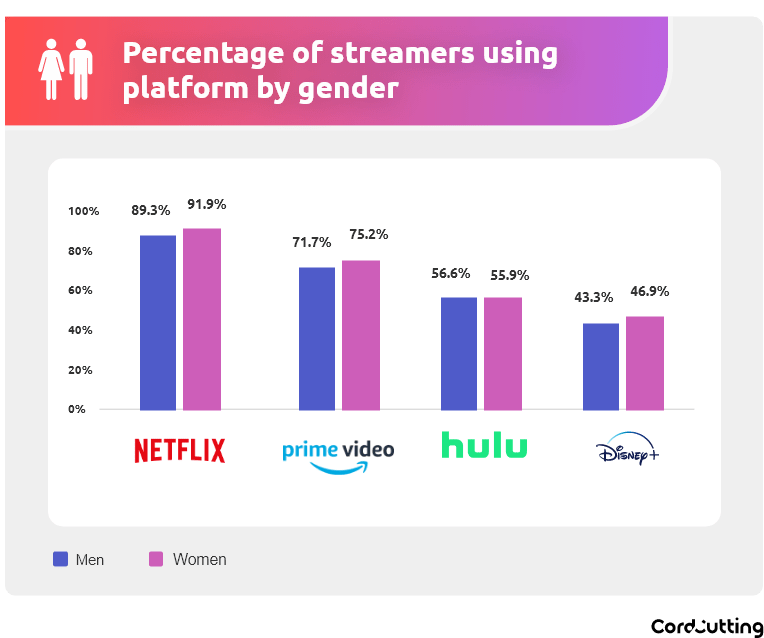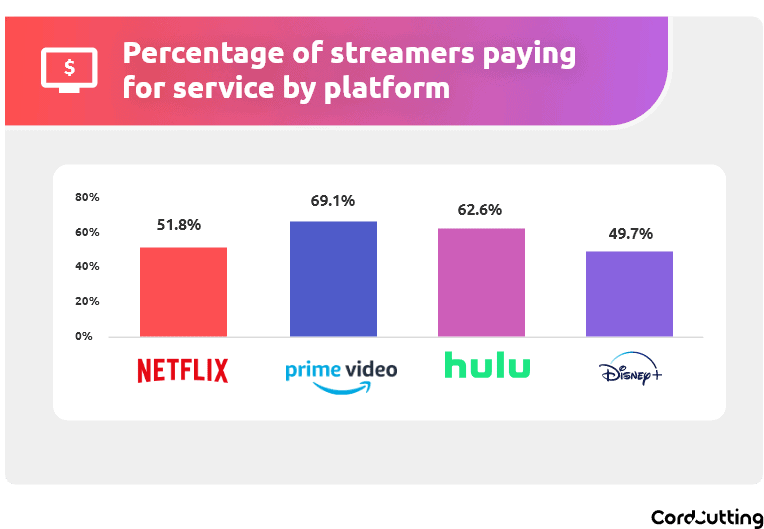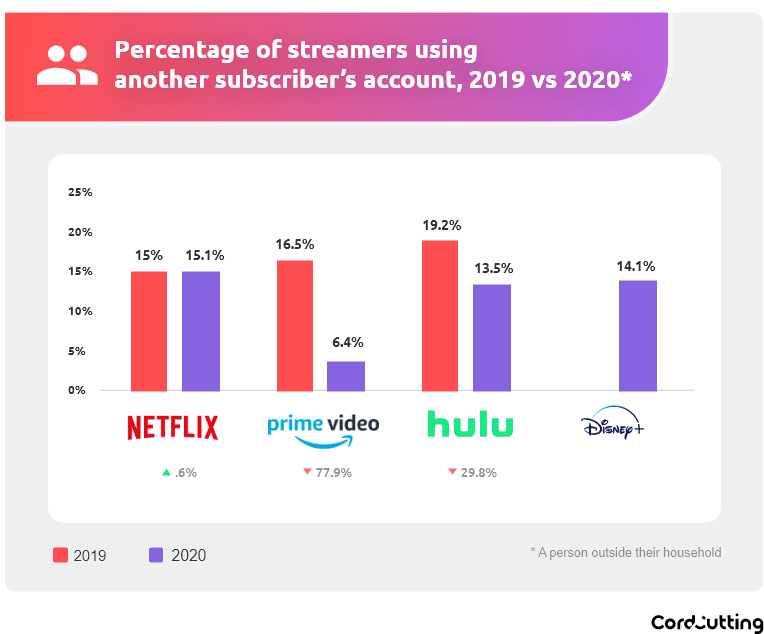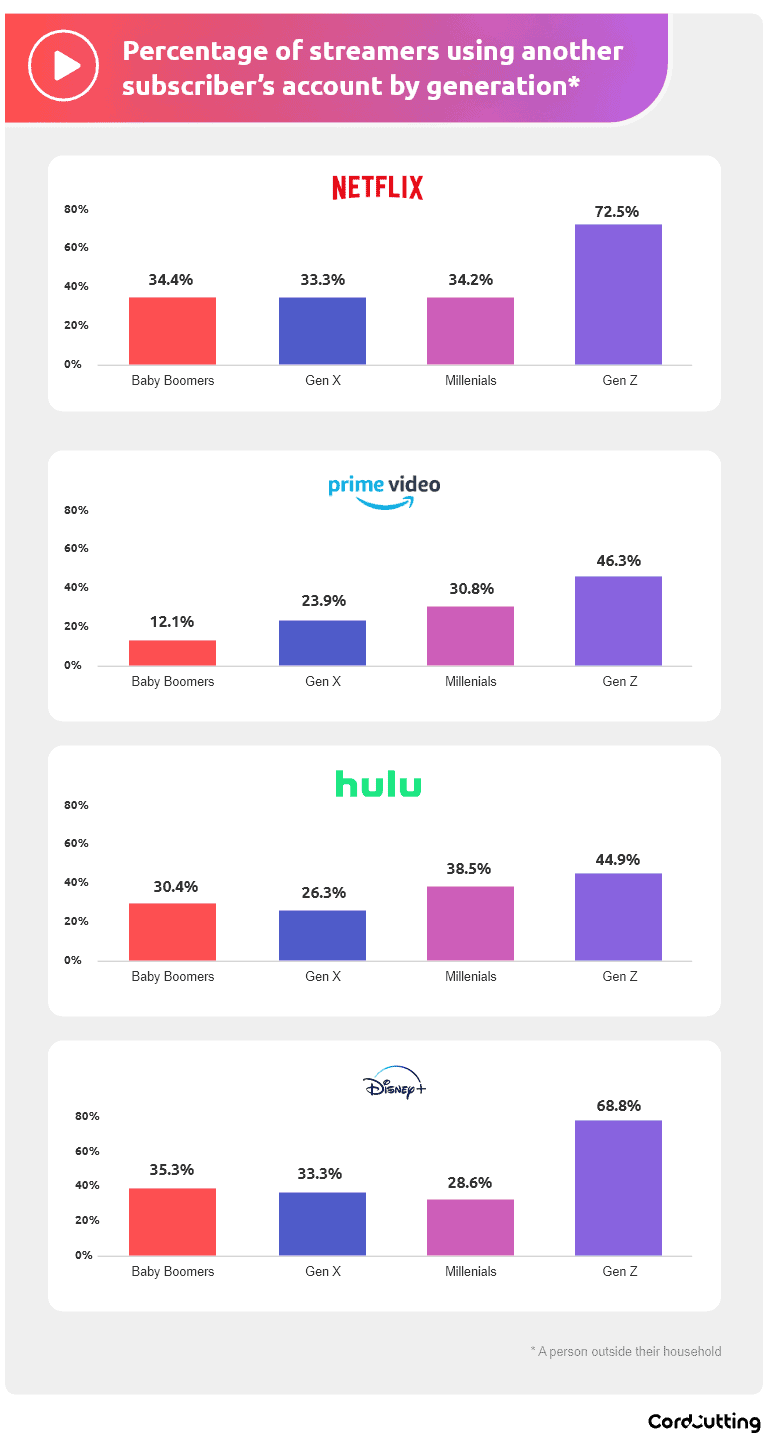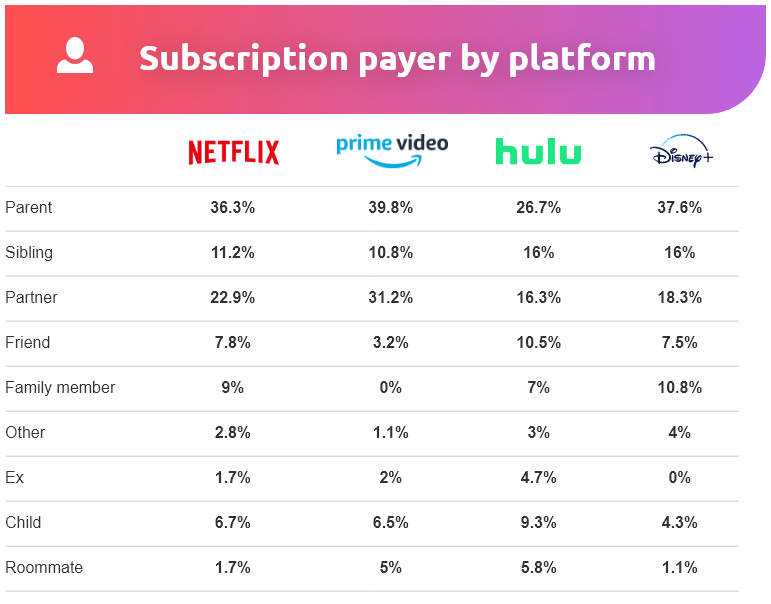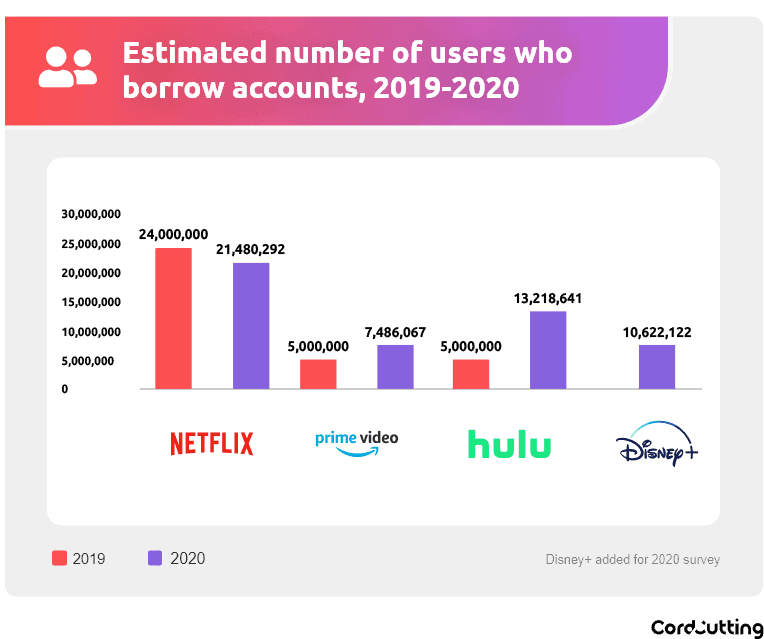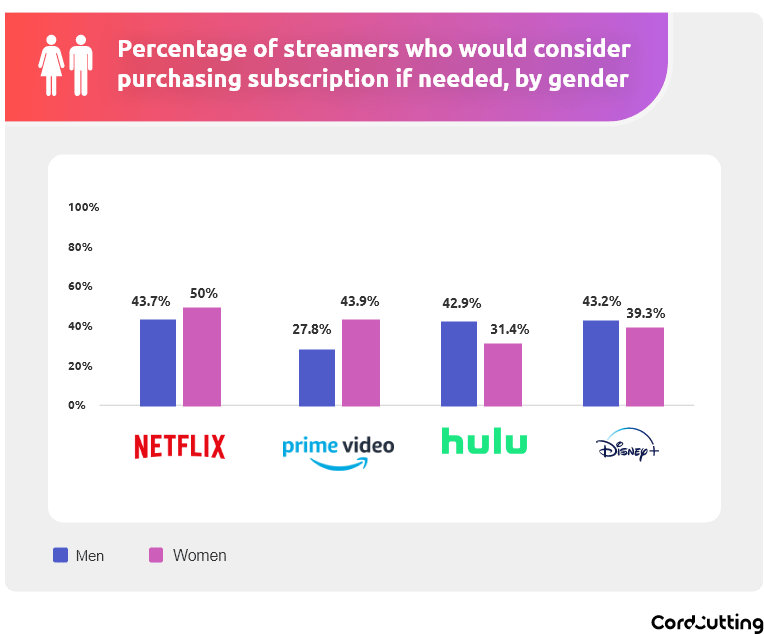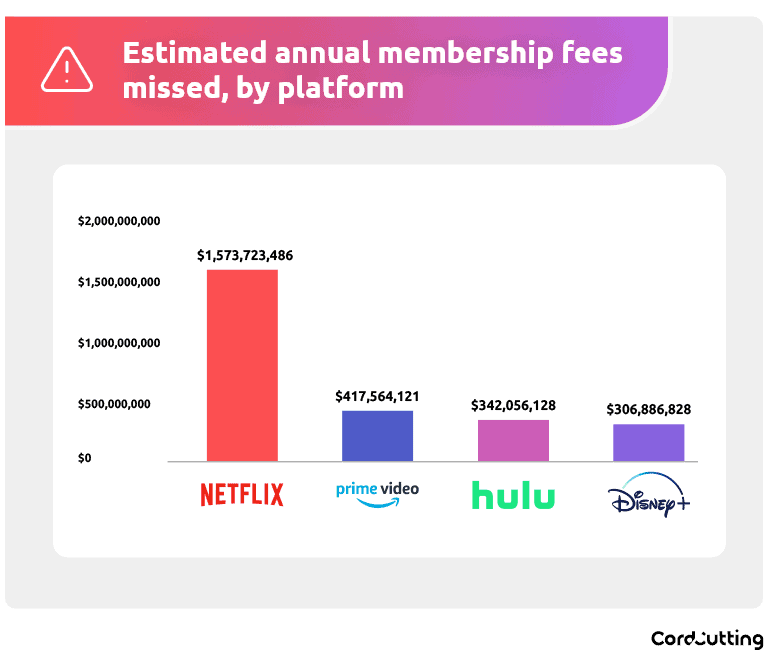Even before the global coronavirus pandemic forced millions of people to spend their days inside their homes, streaming platforms from Netflix to Hulu were adding subscribers by the tens of thousands per day. According to one analysis, a pre-COVID bump of 96 million subscribers was projected for streaming platforms by the end of this year, and these companies are spending billions of dollars creating original content to attract new viewers.
Of course, there has been a huge surge in streaming thanks to the coronavirus quarantine. Nielsen reported that streaming rose 36 percent between February and March 2020, and the average person is watching more than double the amount of streaming video as they were this time last year.
When you combine our growing love affair with streaming content and our pressing need for home-bound entertainment, it’s not hard to see how important streaming subscriptions are for the average person.
So, you could be forgiven for thinking more of us would actually be subscribers to these platforms. In early 2019, we asked more than 500 consumers a series of questions to see how common subscription — ahem — sharing was. (See our 2019 report.) We found that nearly one in five Hulu viewers were using someone else’s login, and about 15 percent of Netflix users borrowed another person’s account.
Where does subscription sharing stand today? Does its frequency depend on the age of the user, their gender or the platform in question? And how many people would be comfortable buying their own streaming subscription — if they had to?
Key findings:
- Thirty-four percent of adults are streaming-exclusive consumers, up from 30 percent in 2019.
- There are more than 55 million “borrowed” accounts across major streaming platforms.
- A large minority of these “borrowers” state they’d pay for an account themselves if they were cutoff, representing more than $2.6 billion in potential revenue for streamers.
- Ninety percent of streamers watch Netflix, and while Disney+ has the lowest adoption rate of the four major platforms, it’s close behind Hulu despite being in its infancy.
Who’s Streaming?
Our analysis estimates that about 168 million American adults are streaming consumers, whether they watch only streaming video or a combination of streaming and traditional set-top content, such as through a cable or satellite subscription. Nearly 34 percent of adults, or 57 million adults are streaming-only consumers using one of the 2,000+ U.S. internet providers, according to our analysis. This is an increase of about four percentage points from 2019, when 30 percent of people said they watch all their content through streaming platforms.
Perhaps unsurprisingly, major gaps exist along generational lines in how people consume entertainment content. While overall about one-third of people are exclusively streamers, that rises to nearly 45 percent for Gen Z’ers but falls to just 17 percent for Baby Boomers.
Preferred Platforms
Our analysis found that Netflix remains the most popular streaming service, with more than nine in 10 streaming users in our study saying they watch shows on the home of “Tiger King,” “Stranger Things” and “Ozark.”
Amazon Prime Video is the second most-watched streaming service, according to our survey, followed by Hulu and Disney+, which is the most recent entry of the four, launching in the second half of 2019 but rapidly gaining on Hulu in that brief time.
We saw major generational swings in our study with the newer platforms (Hulu and Disney+) being far more common among millennials and Gen Z’ers than others, though Gen Z’ers are the most avid users of Netflix. This group also had the highest floor of any generational group — 65 percent was their lowest adoption rate, compared to just 24 percent of Baby Boomers who watch Disney+.
Only minor changes were indicated when breaking viewers down by gender, though women lead men in viewership of all platforms with the slight exception of Hulu, where men are ahead by less than a percentage point.
Disney+ hadn’t launched in early 2019, when we conducted our first study, but each of the three other platforms have seen adoption increase, with both Amazon Prime Video and Hulu posting double-digit gains. Netflix adoption rose but by a very small rate.
Baby Boomers were the only generation that increased adoption of Netflix between 2019 and 2020, while Millennials flocked to both Amazon Prime Video and Hulu, helping push those platforms’ numbers up.
Who’s Paying?
Streaming is often billed as a cost-effective alternative to cable and satellite packages that sometimes require a phone line or home security, and that’s especially true if you’re not the one paying for it in the first place. Our study found that among the four streaming services we asked about, Amazon Prime Video was the most likely service respondents were paying for themselves, which is not surprising since Amazon Prime includes the service.
Less than half of Disney+ subscribers pay for their own account, and Netflix users aren’t far behind at 52 percent self-paying subscribers.
An average of about 17 percent of respondents in 2019 mooched — we mean borrowed — the streaming credentials of someone else, and today that number is only about 11.6 percent, driven by huge declines in sharing Amazon Prime Video subscriptions.
Across the board, the youngest survey respondents were the most likely to be using another person’s account to watch streaming services, though if they’re paying for anything, Gen Z’ers are most likely to shell out for their own Amazon Prime Video memberships.
What generous parties are we stealing from? That depends on the platform in question, but interestingly, about five percent of Hulu users in our study are mooching off a former partner. In every case, though, the most likely streaming benefactor is named Mom or Dad — an average of about 35 percent of streamers said they use their parents’ accounts.
Revenue Impact of Mooching
Our 2019 analysis determined that streaming platforms are missing out on billions of dollars in revenue every year, and the same is still true today, though there’s a compelling argument to be made that it’s not worth platforms cracking down — more on that later.
Based on the number of internet-using adults in the U.S., our analysis found that more than 53 million Americans are borrowing streaming accounts, and that number has gone up for both Netflix and Amazon Prime Video, though it declined slightly for Hulu.
If Netflix alone was charging each of those people for their own subscription, that would generate $300 million in membership fees per month, but there’s no doubt that many people simply wouldn’t buy a subscription — after all, they’ve had years to do so and haven’t yet.
So we asked, for each platform, if access was revoked would borrowers purchase their own account. Forty-seven percent of Netflix borrowers said they would purchase their own account followed by Disney+ (41 percent), Amazon Prime Video (38 percent) and Hulu (36 percent).
Men and women that borrow accounts have different priorities for which streaming platforms they'd pay for if access were revoked. Men would be more likely to pay for Hulu and Disney+, which women are more likely to pay for Netflix and Prime Video.
On an annual basis, the four major streaming platforms could generate a combined $2.6 billion in revenue from subscription fees if all the people who said they’d pay for a subscription actually did. But don’t forget that less than half of all respondents said these services were worth paying for even before the COVID-19 crisis sent millions of people to the unemployment line.
Conclusion
As people continue sheltering in place and abiding by guidance to limit contact with people outside their household, it’s tough to imagine the PR fallout that would result if any of the streaming companies decided to bring the hammer down on subscription sharing, though only time will tell if they remain generous.
Methodology
We surveyed 500 U.S. adults about their entertainment habits, which streaming platforms they use and who pays for them. To calculate the overall number of American adults who use streaming services, we based our analysis on the most recent data published by the Pew Research Center, which projected that about 90.5 percent of American adults use the internet, equating to about 168 million people.

